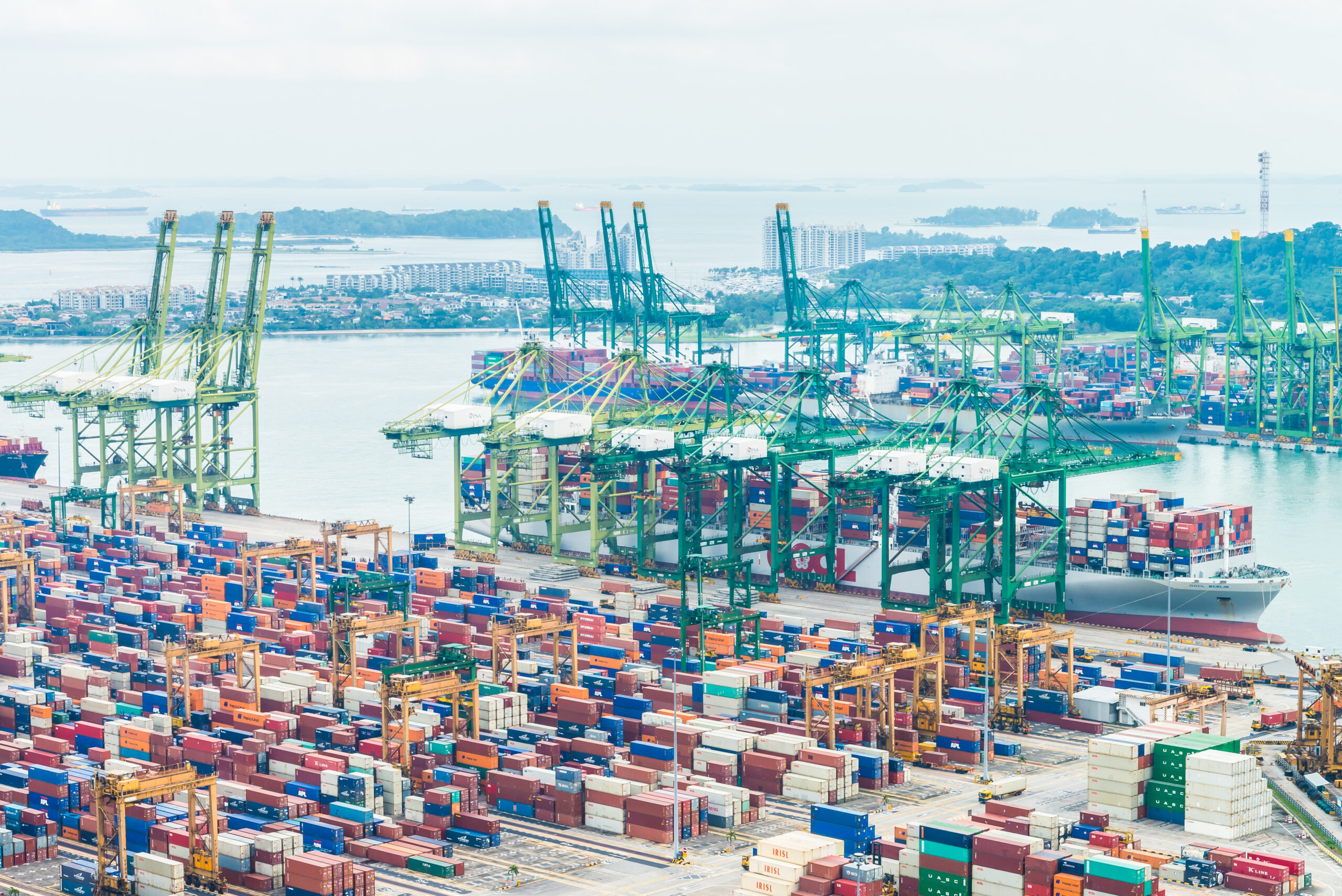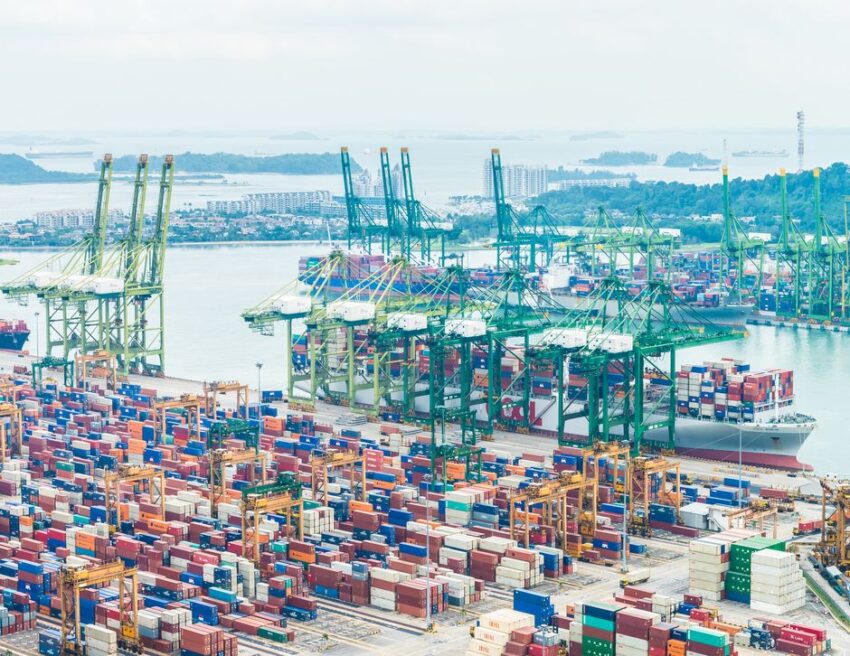The unexpected warming of the eastern Pacific Ocean, commonly known as the El Niño phenomenon, has joined the constantly increasing list of climate-induced weather events disrupting the global ocean freight shipping industry. Experts in maritime analysis suggest that the emergence of El Niño, a naturally occurring phenomenon that typically recurs every two to seven years, may worsen challenges in some of the world’s critical maritime routes and supply chains. While its usual peak occurs around December, El Niño’s complete impact will require more time to resonate across the globe. In today’s blog, we are going to discuss how El Nino is impacting the ocean freight shipping industry with special reference to the drought in the Panama Canal and its repercussions on container shipping.

How El Nino is impacting international ocean freight shipping industry
What is El Nino?
The term “El Niño” is commonly used to depict the periodic warming of sea surface temperatures, typically concentrated in the central-east equatorial Pacific region. An El Niño event is officially declared when sea temperatures in the tropical eastern Pacific rise by 0.5°C above the long-term average. Its effects are prominently felt in the tropical eastern Pacific, resulting in warmer-than-average weather conditions. “Despite the recent presence of a cooling La Niña over the past three years, we have experienced the eight warmest years on record. This La Niña acted as a temporary brake on the overall increase in global temperatures. However, the emergence of an El Niño is likely to trigger a fresh surge in global warming and raise the likelihood of breaking temperature records,” emphasized Professor Petteri Taalas, the Secretary-General of the World Meteorological Organization (WMO).
How it can affect global supply chain
The impacts of El Niño on global trade can vary depending on the region and industry, but there are some general effects to take into account. Global sourcing supply chains, in particular, may encounter potential challenges, especially in the case of the Panama Canal, where reduced water levels can slow down shipping speed through this vital waterway. Moreover, several sectors could experience a wide range of issues due to El Niño.
Maritime transportation can be disrupted by El Niño due to altered weather conditions, including storms and increased wave heights resulting from the rise in Tropical Cyclones in the Pacific. This disruption can lead to port closures, shipment delays, and heightened transportation costs. Consequently, trade flows may be affected, potentially impacting the timely delivery of goods and the overall stability of global supply chains.
The drought in Panama Canal and how it is impacting the container shipping sector
The congestion at the Panama Canal coincides with the recent declaration by the United Nations weather agency of the onset of El Niño, which is expected to contribute to a surge in global temperatures and the emergence of extreme weather conditions.
Amidst a severe drought in Panama, the Central American nation has been compelled to reduce the number of vessels allowed to transit through the critically significant Panama Canal. These restrictions have resulted in a backlog of ships awaiting their turn to navigate this route that significantly reduces travel time between the Atlantic and Pacific oceans. The Panama Canal Authority, responsible for managing the waterway, recently stated that these measures were deemed necessary due to “unprecedented challenges” and emphasized that the extent of this year’s drought had no historical precedent.
Maritime analysts have cautioned that the climate crisis-driven extreme weather may elevate the occurrence of incidents resembling the Ever Given blockade, potentially leading to extensive repercussions for supply chains, food security, and regional economies.
Falling water levels
Lars Ostergaard Nielsen, head of the Americas liner operations center at Maersk explained that the ongoing drought is prompting Maersk to load approximately 2,000 fewer containers than their usual capacity on the same vessel. Normally, container ships operating on the Panama Canal might need to adhere to a maximum depth limit of 50 feet. However, current restrictions mandate a draft limit of 44 feet, which forces container ships to either reduce their cargo weight or transport fewer goods. “Six feet of water can make a substantial difference,” noted Nielsen.
While the Panama Canal appears to be one of the shipping routes most susceptible to climate-related vulnerabilities, it is not the sole waterway grappling with the consequences of extreme weather. The ocean freight shipping industry could further suffer due to low water levels on the Rhine River. It is a crucial trade route stretching from Germany through various European cities to the port of Rotterdam in the Netherlands.
Climate Risks in Maritime Chokepoints
In a report published late last year, global insurance broker Marsh emphasized the need for a more comprehensive understanding of the vulnerabilities associated with maritime chokepoints, especially in light of the increasing occurrence of climate-induced disruptive weather events. Regarding the Suez Canal, Marsh highlighted two specific physical risks exacerbated by the climate emergency: coastal inundation, where rising sea levels could flood vital infrastructure, and the growing likelihood of extreme heat events.
Marsh’s analysts pointed out that any disruption to the five major waterways due to El Nino could have repercussions far beyond global supply chains. These significant waterways include the Suez and Panama canals, the Strait of Malacca situated between Indonesia and Malaysia, the Strait of Hormuz connecting Iran and Oman, and the Bab-el-Mandeb located between Djibouti and Yemen.


